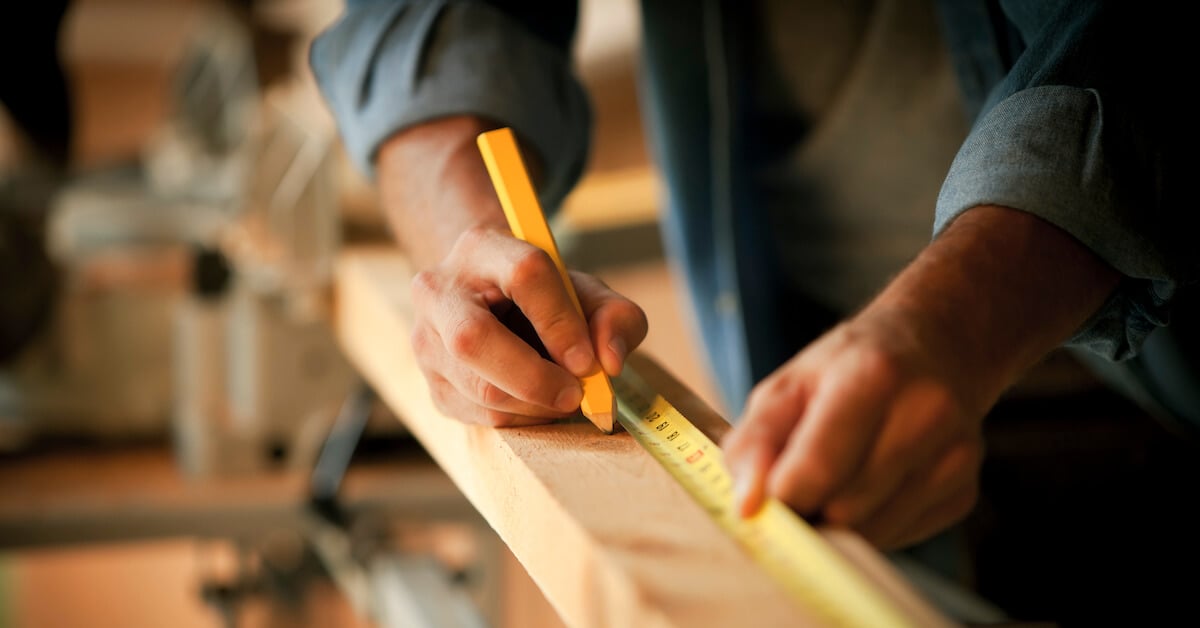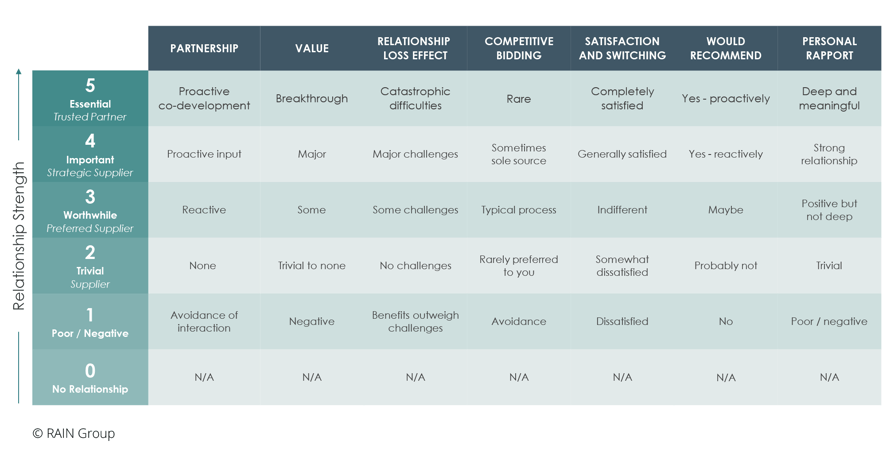Ask most people about the strength of their core client relationships and they'll say, "Great. Rock solid."
Yet these comments usually refer to how much rapport or trust sellers feel they have with the client. They don't answer the question through the lens of business value the client receives from them.
They're also often thinking more of the relationship they feel they have with their client, not how their client feels about them.
To assess the strength of your relationship with a client, the key is to view it through their eyes.
How Can You Evaluate Client Relationships in Sales?
-
1. Does the client see us as a partner?
And what's the nature of that partnership? Do they come to us proactively looking for strategic guidance? For specific advice? Or, do they only listen to us when we reach out to them? Indeed, do they listen to us if we reach out to them?
2. How does the buyer view the value we deliver?
Is it breakthrough—have we made a huge, game-changing impact on their business? Is it major—have we made a measurable and worthwhile impact on their business? Something else? Note that if you have made an impact, but the client can't articulate it, then the client may not value it.
3. If we were to end the relationship, how would the client perceive that loss?
Would it cause no challenges for the client? Some challenges? Major challenges? Catastrophic difficulties? Again, keep in mind we’re talking about how challenging the client would perceive that loss, not you.
4. If someone else proposed to our client that they should replace us, how would the client view that?
Would they resist the change? Would they fight to keep us? Do we have one or more champions who would go to bat for us?
5. To what extent are we required to participate in a client's competitive bidding process?
Are we typically required to bid with no or little early knowledge of the criteria? Are we only required to bid sometimes? Do we help shape the bidding or procurement process before anyone else gets involved?
6. How likely are our clients—specifically the people with whom we have direct relationships—to replace us on their own?
Would they actively seek a new supplier? Listen to overtures from competitors? Or, would they be unlikely to even take an audience with our competitors?
7. Does the client recommend us to others?
Do they refer us proactively? Only if we ask? Never?
Based on your answers to these questions, plot your relationship in The Relationship Strength Meter below—a tool for gauging how essential you are to your clients, from the point of view of what they would say.
Once you've plotted your relationship in the grid, it's time to start thinking about why the relationship is where it is, what can be done to strengthen it, and how much investment energy you should place in one client or another.
What Do Essential Relationships Look Like?
Most sellers have at least one relationship where they find themselves, for the most part, at the top (essential) level. They say clients would answer the questions something like this:
- Partnership: "We partner with them proactively at the highest appropriate levels when we are considering new strategies in the areas relevant to them."
- Impact on success: "We get breakthrough results with them."
- Relationship loss: "Losing our partnership would be catastrophic."
- Reaction to replacement: "Not going to happen on my watch."
- Competitive bidding: "Sometimes I have to go to bid, but they shape the request for proposals with me. If I can swing it, I sole source to them."
- Replace by themselves: "No."
- Would recommend: "Yes, proactively."
Strong client relationships lead to repeat business, account growth, increased referrals, and greater revenue and margin for your business. Yet often, when you look at relationships from the buyer's perspective, they are not as strong as they could and should be. Use this chart to determine how strong your client relationships are and what you can do to get them to the essential level.
How to Build Strong Client Relationships
People buy with their hearts and justify with their heads. They pick people who make the best personal connection with them. That's why client relationships are so important.
How do you establish that connection? How do you develop strong client relationships? It begins with your initial contact with prospects. For example, say you meet someone in a social context or the person is someone you know personally. They're a decision maker in a business that's an ideal client for your firm and you'd love to tell them how your products and services can help their company, but you don't want to come off as a pushy salesperson.
In that situation, you want to simply initiate a conversation about issues in their industry and ask for advice and feedback. If you have an article or presentation coming up, you can solicit their perspective. This showcases your ideas in a non-selling situation and starts a conversation. After, send them the content and highlight their contribution.
It's the beginning of a relationship you can then nurture over time.
If you contact prospects via email, sending information about industry changes, research reports, or case studies, make the correspondence personal. Make a point to mention something of personal interest, such as a recent accomplishment (addition to staff, industry award, mention of them in a published article, etc.) or even a win from their favorite sports team. Doing so shows you're interested in them and not just their buying dollar. Whatever the outreach, tailor your interactions toward building long-term relationships.
The main thing that will help you develop good client relationships with prospects and clients is demonstrating that their needs come first. You have to see their issues as they do and be able to explain clearly solutions to help them, even if the solution comes from someone other than you. Being genuine in what you suggest and offer goes a long way toward developing trust with the buyer and establishing a good working relationship.
The Best Business Comes from Repeat Clients
Once you establish the buyer as a client, don't let the relationship end. It's time to take it to the next level and keep clients as happy as possible. Make sure the service you deliver is excellent and in touch with them after the contract is fulfilled. Offer support throughout the year, send them articles and reports they might be interested in, call them once a quarter to check in, or send them gifts marking their anniversary with you as a client.
Use those touches to also make sure clients know about all of your services. While they may know about the one service they received, they probably don't know about other ways you can help.
Tapping your current (and past) client base, introducing them to other services, and networking your way through the client firm are all ways to grow and get new projects. Your direct contact can act as an internal champion for you and your services to introduce you to other decision makers within their organization.
The more you stay in front of someone, the more you are on their mind and likely to call on you when a new need arises. Plus, they're more apt to refer you to others. Don't underestimate the power of a client's happiness and word of mouth; positive and negative client relationships impact the success or failure of your business.






